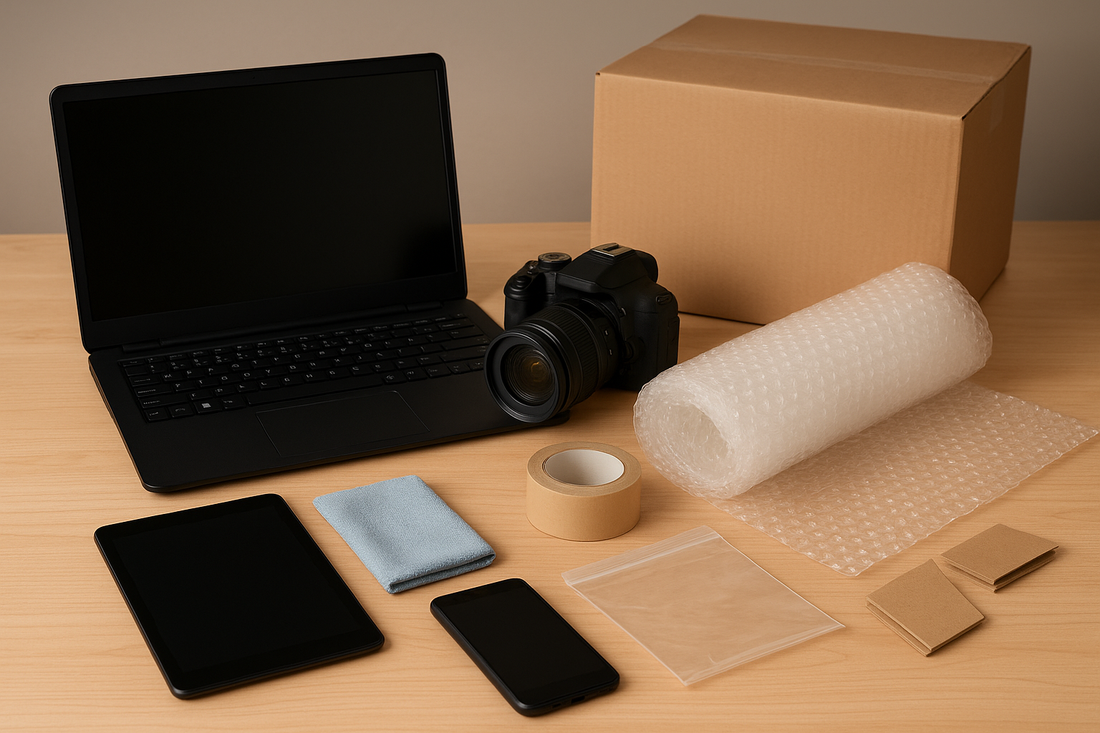Moving house is stressful enough without worrying about your precious gadgets arriving in pieces. Whether you're a tech junkie with more devices than socks or just someone who values their laptop more than their left arm, this guide will ensure your electronics make it to your new home in one piece. So, let's dive into the nitty-gritty of how to pack electronics for moving, shall we?
Why Proper Packing Matters
Before we jump into the 'how', let's talk about the 'why'. Did you know that improper packing is responsible for 18% of all moving damage? That's right, your laziness could cost you dearly. Electronics are particularly vulnerable, with delicate components that can be damaged by static, shock, or even a bit of enthusiastic jostling.
Preparation: The Key to a Smooth Move
1. Gather Your Supplies
First things first, you'll need the right tools for the job. Here's your shopping list:
- Anti-static bubble wrap (because your electronics deserve better than newspaper)
- Foam sheets or inserts (for that extra cushiony goodness)
- Microfiber cloths (to make your gadgets sparkle)
- Sturdy cardboard boxes (no flimsy shoe boxes, please)
- Packing tape (the stronger, the better)
- Zip-lock bags (for corralling those pesky small parts)
- Cardboard corners (for TVs, because corner protection is sexy)
2. Back It Up, Back It Up
Before you even think about unplugging anything, back up all your data. Yes, all of it. Even that folder of memes you've been hoarding since 2010. Trust us, you'll thank us later when your hard drive doesn't survive the journey.
3. Document and Label
Channel your inner detective and document everything. Take photos of your cable setups - future you will be eternally grateful. Label every cable, port, and accessory like your life depends on it. Because when you're setting up your entertainment system at 2 AM in your new place, it kind of does.
The Art of Packing Electronics
1. Prep Your Devices
- Unplug everything and let it cool down for 24 hours. Electronics need a break too, you know.
- Remove all batteries. Nobody wants a leaky AA ruining their day.
- Eject any discs or drives. Your Xbox doesn't need to travel with Skyrim still inside it.
- Clean everything gently. Dust is not a protective layer, despite what your teenager might think.
2. Wrap It Up
- Start with a layer of anti-static bubble wrap. It's like a spa treatment for your gadgets.
- Use foam sheets for extra padding. Think of it as a comfort blanket for your electronics.
- Secure the wrapping with tape. But not too tight - we're protecting electronics, not mummifying them.
3. Box It Right
Choose boxes that fit your devices snugly, but not too snugly. You want a Goldilocks situation here - just right. Fill any empty spaces with more bubble wrap or foam. Your electronics should be nestled in there like expensive, fragile eggs.
4. Special Care for Screens
- Lay them face down on a soft surface.
- Wrap generously with bubble wrap.
- Use those fancy cardboard corners for extra protection.
- Stand them upright in the moving truck. They're not meant to lie down on the job.
Loading and Unloading: The Final Frontier
- Keep electronics in a secure spot in the moving vehicle.
- Don't stack heavy boxes on top of them. Your mini-fridge does not need to befriend your laptop.
- Unpack electronics carefully upon arrival.
- Let them acclimatize to room temperature before plugging them in. Electronics are sensitive souls.
Extra Tips for the Overly Cautious (or Justifiably Paranoid)
- Consider transit insurance. Because peace of mind is priceless.
- Use tracking devices. Stick a Tile on your valuable electronics. It's like Lo-Jack for your laptop.
- Keep accessories together. Use those labeled zip-lock bags we talked about earlier. Future you will be impressed with your organization skills.





